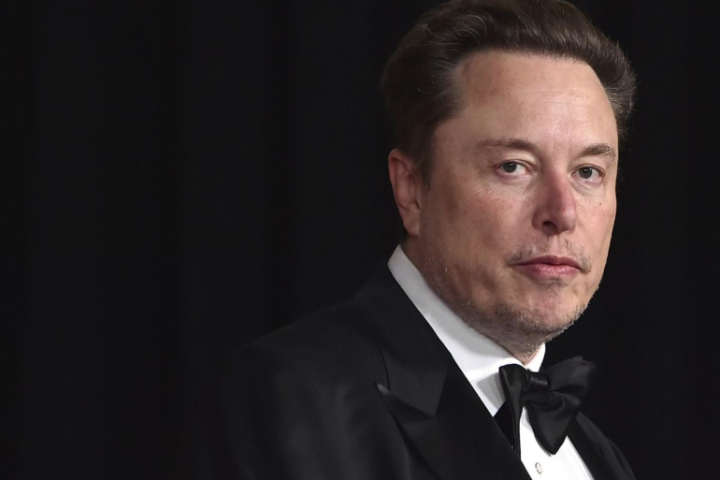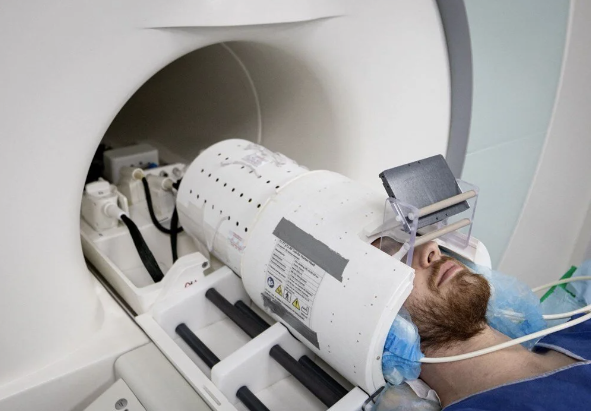In a series of posts, the billionaire CEO of Tesla and SpaceX said, “The first users will be amputees. Imagine Stephen Hawking being able to communicate faster than a serial typist or an auctioneer. That’s the goal.”
Stating that the device called ‘Telepathy’ will “allow the control of phones, computers and all electronics only through thought,” Musk also stated that the first results are promising and that the patient with the chip is recovering. He did not give details about who was implanted.
So how does the chip work?
The method involves implanting 64 flexible wires, thinner than a human hair, into the part of the brain that controls movement. The company says the experimental implant records brain signals and wirelessly transmits them to an app that figures out how the person wants to move.
The startup’s current study is a test for a wireless brain-computer interface to evaluate the safety of the implant and surgical robot. The study will evaluate the functionality of the interface, which allows people paralyzed in four limbs to control the device with their thoughts.
“This study involves implanting a small, cosmetically invisible implant in a part of the brain that plans movements. The device is designed to make sense of a person’s neural activity. So the individual can operate a computer or smartphone simply by intending to move. No wires or physical movement is required.”

How is it different from the brain-machine interfaces of the past?
The device developed by Neuralink, founded by Elon Musk in 2017, is the size of a coin. The biggest advantage of this device compared to brain-machine interfaces of the past is its very thin and flexible wires that can connect directly to brain tissue.
Because it is known that the hard needles used by older generation devices damage brain cells. Musk is ambitious and says that these devices can be used to solve many neurological problems, from memory loss to addiction.
What has happened up to this point?
Last year, the company received approval from the US Food and Drug Administration (FDA) to conduct clinical trials on humans. This was a critical milestone, as the company had been fighting for FDA approval for some time. Its previous application had been rejected on ‘dozens of issues and safety grounds that the company needed to address’.
Recently, it was reported in the press that Neuralink was fined for violating US Department of Transportation (DoT) rules on the transportation of hazardous materials.
DoT inspectors found improper packaging of hazardous waste, including xylene. According to the US Centers for Disease Control and Prevention, xylene can cause headaches, dizziness, confusion, loss of muscle coordination and even death.
What are the concerns raised about Neuralink’s activities?
Neuralink aims to develop implanted devices that will allow people to control computers with their brains, as well as to give people with disabilities the ability to see or move. While this goal is exciting for people with disabilities, some concerns have been written and drawn about Neuralink’s brain chips.
As we’ve mentioned before, major problems include the device’s battery, the possibility of the implant cables migrating within the brain, and the difficulty of safely removing the device without damaging brain tissue.
It was also reported in the press that Musk expected too much progress in a short period of time and that scientists had to manage this unreasonable expectation. There were those who said that every stage of Neuralink’s progress was a cause for concern, as well as hopeful scientists who said it would mean a new treatment for patients. But almost all agreed that Musk and his company had ethical issues to resolve.
What happened to the animals used in the experiment?
Neuralink has been investigated for animal rights violations due to reports of experiments resulting in deaths. Since 2018, it has allegedly caused the deaths of around 1,500 animals, including sheep, pigs and monkeys, during its experiments.
Musk denied these allegations, “No monkey has died due to the Neuralink implant. We chose dying monkeys to minimize the risk to healthy monkeys.”
However, a former employee called Musk’s statement ‘ridiculous’ and said that the monkeys should undergo a year of behavioral training before the implants. The horrible news in the press also contradicted Musk’s statements. You can find the details in our archive.
We’re going to hear about it a lot: What is BCI?
BCI (Brain-computer interface) is a system that decodes brain signals and translates them into commands for external technologies.
Neuralink, part of the burgeoning BCI industry, is perhaps the best-known company in the field, thanks to the high profile of Musk, who is also CEO of Tesla and SpaceX. But it faces competitors, some with almost two decades of history.
Is Neuralink a first?
No, it is not. Utah-based Blackrock Neurotech made the first brain implant in 2004. Many other companies such as Synchron, Precision Neuroscience and Paradromics have already created systems with this function. Paradromics aims to conduct its first manned test this year. Precision Neuroscience conducted its first human clinical trial last year.
And Musk is not the only tech billionaire making an appearance in the burgeoning BCI industry. He has been testing the Synchron technology, backed by Jeff Bezos and Bill Gates, on humans for some time. And this technology has (for now) been used on three patients in the US and four in Australia.




